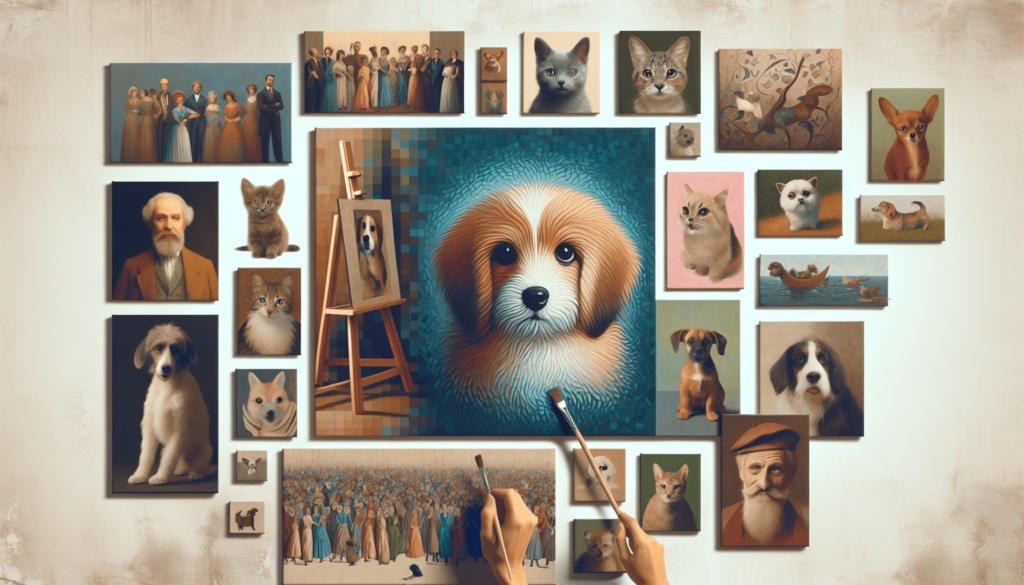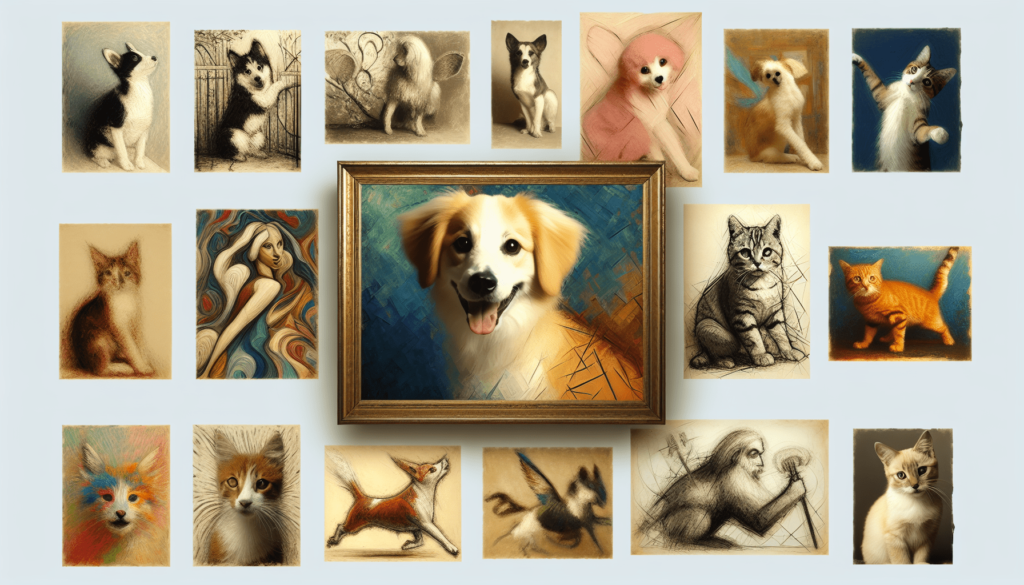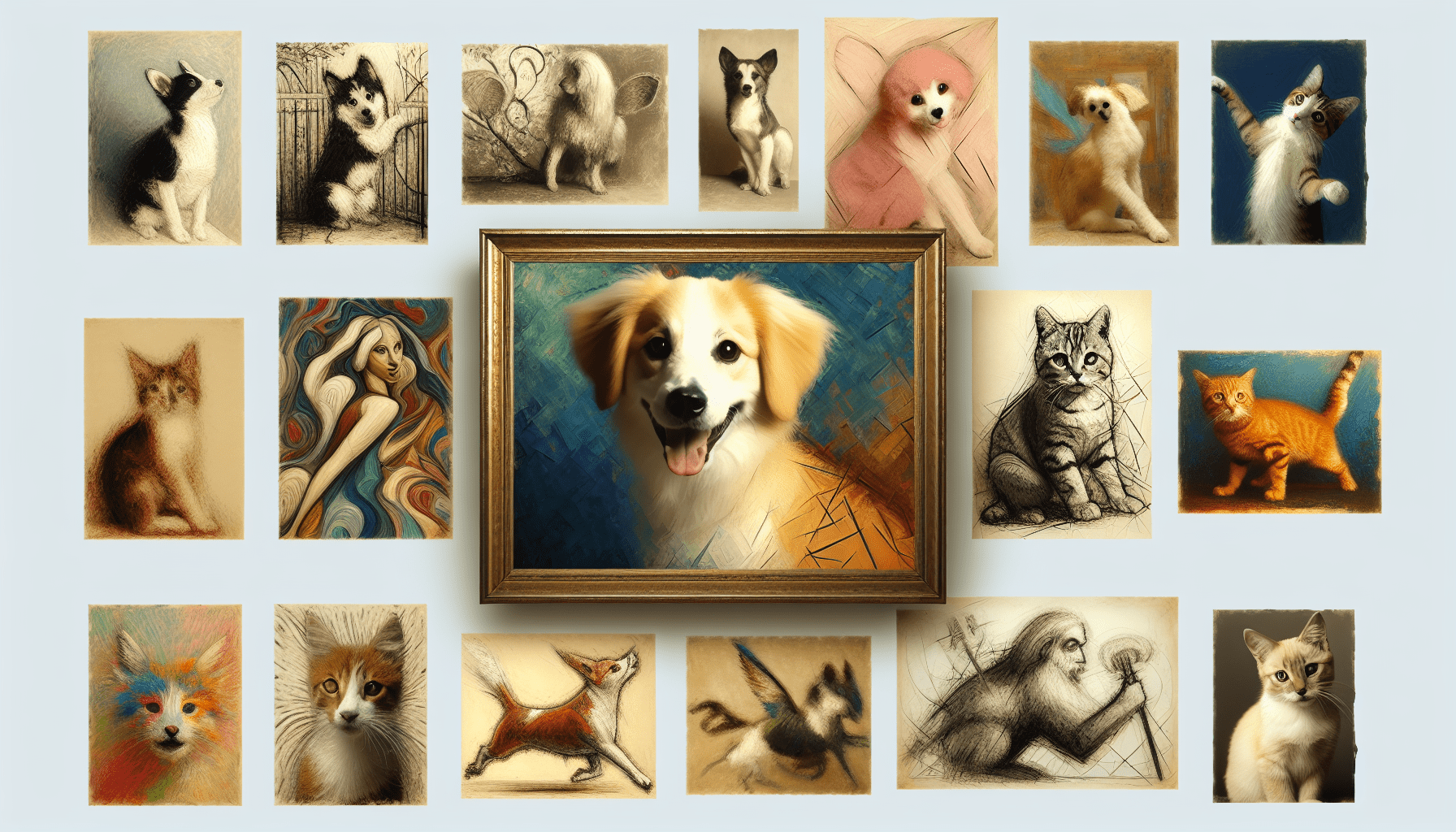Welcome to the colorful and heartwarming world of “Pets In Art: A Visual Journey.” This article takes you on a delightful exploration of how pets have been portrayed throughout history in various forms of art. From playful depictions of dogs in Renaissance paintings to whimsical illustrations of cats in modern digital art, you will immerse yourself in the joy and beauty of the special bond between pets and their human companions. Get ready to be inspired and uplifted as you journey through this visual feast of artistic interpretations of our beloved furry friends. Hey there! Have you ever wondered how pets have been depicted in art throughout history? Join us on a visual journey to explore the many ways artists have captured the essence of our furry, feathered, and scaly companions. From regal portraits to whimsical illustrations, pets have held a special place in the world of art for centuries.
The Ancient Influence of Pets in Art
Let’s start our journey by exploring how pets were portrayed in ancient art. In civilizations such as Ancient Egypt, Greece, and Rome, pets were often seen as symbols of wealth, status, and companionship. Cats, dogs, and even birds were commonly depicted in paintings, sculptures, and pottery. These representations not only reflected the importance of pets in daily life but also served as symbols of protection, loyalty, and love.
Egyptian Art: Cats as Divine Guardians
In Ancient Egypt, cats were revered as sacred animals and were often depicted in art as symbols of protection and fertility. The goddess Bastet, who was associated with cats, was often portrayed as a lioness or as a woman with the head of a lioness. Cats were believed to have protective qualities and were seen as guardians of the home and family.
Greek and Roman Art: Dogs as Loyal Companions
In both Greek and Roman art, dogs were often portrayed as loyal companions and symbols of loyalty and fidelity. Dogs were commonly depicted in paintings and sculptures, often accompanying their owners on hunts or serving as protectors of the household. These depictions emphasized the bond between humans and animals and showcased the deep connection between pets and their owners.
Renaissance and Baroque Portraits: Pets as Symbols of Wealth and Status
During the Renaissance and Baroque periods, pets were often included in portraits of the wealthy and aristocratic elite. Dogs, cats, birds, and other animals were seen as symbols of wealth, status, and power, and were depicted alongside their owners in elaborate paintings and tapestries. These portraits not only showcased the luxurious lifestyles of their subjects but also highlighted the importance of pets as cherished companions.
Renaissance Art: Dogs as Symbols of Loyalty and Faithfulness
In Renaissance art, dogs were often depicted as symbols of loyalty, faithfulness, and devotion. Paintings of dogs with their owners emphasized the bond between humans and animals, showcasing the deep emotional connection between pets and their families. Dogs were often portrayed in poses that highlighted their loyalty and protective instincts, symbolizing the values of loyalty and fidelity.
Baroque Portraits: Cats as Symbols of Elegance and Grace
In Baroque portraits, cats were often portrayed as symbols of elegance, grace, and refinement. Cats were seen as companions of the elite and were featured in paintings that showcased their beauty and sophistication. These portraits often depicted cats lounging in luxurious settings, highlighting their status as symbols of wealth and privilege.

The Romantic Era: Pets as Sentimental Companions
During the Romantic era, pets were portrayed in art as sentimental companions who provided comfort, solace, and companionship to their owners. Dogs, cats, and other animals were often depicted in paintings and drawings that emphasized the emotional bond between pets and their owners, showcasing the deep love and affection that existed between them.
Romantic Paintings: Dogs as Symbols of Loyalty and Devotion
In Romantic paintings, dogs were often portrayed as symbols of loyalty, devotion, and unconditional love. Artists such as Sir Edwin Landseer and George Stubbs captured the emotional connection between humans and animals, showcasing the ways in which pets provided comfort and companionship to their owners. These paintings often featured dogs in poses that emphasized their loyalty and devotion, symbolizing the enduring bond between pets and their families.
Sentimental Portraits: Cats as Symbols of Comfort and Companionship
In sentimental portraits of the Romantic era, cats were often depicted as symbols of comfort, companionship, and solace. Cats were seen as loyal companions who provided emotional support and affection to their owners, showcasing the deep bond between pets and their families. These portraits often featured cats in tender poses, highlighting their role as beloved companions who brought joy and comfort to their owners.
Modern and Contemporary Art: Pets as Individual Characters
In modern and contemporary art, pets have been portrayed as individual characters with unique personalities, quirks, and characteristics. Artists such as Andy Warhol, Frida Kahlo, and Jeff Koons have captured the essence of pets in their artwork, showcasing the ways in which animals have become integral parts of our lives and identities. From colorful pop art portraits to avant-garde installations, pets have been reimagined and reinterpreted in a variety of creative and innovative ways.
Pop Art Portraits: Dogs and Cats as Icons of Pop Culture
In pop art portraits, dogs and cats have become icons of popular culture, symbolizing the ways in which pets have been integrated into our daily lives and society. Artists such as Andy Warhol have portrayed pets in vibrant and colorful paintings that celebrate their unique personalities and characteristics. These portraits capture the essence of pets as beloved companions who bring joy, laughter, and love into our lives.
Contemporary Installations: Pets as Symbols of Identity and Diversity
In contemporary art installations, pets have been reimagined as symbols of identity, diversity, and representation. Artists such as Jeff Koons and Yayoi Kusama have created immersive installations that explore the ways in which pets reflect our individuality, creativity, and imagination. These installations showcase the ways in which pets have become integral parts of our cultural landscape, symbolizing our shared experiences and values.

Conclusion
As we come to the end of our visual journey through the depiction of pets in art, we have seen how artists have captured the essence of our furry, feathered, and scaly companions throughout history. From ancient symbols of protection and loyalty to modern icons of pop culture and diversity, pets have held a special place in the world of art for centuries. Whether portrayed as symbols of wealth, status, or sentimentality, pets have provided inspiration and companionship to artists and art lovers alike. So the next time you admire a painting, sculpture, or installation, take a moment to appreciate the enduring bond between humans and animals, as captured in the timeless beauty of art.

